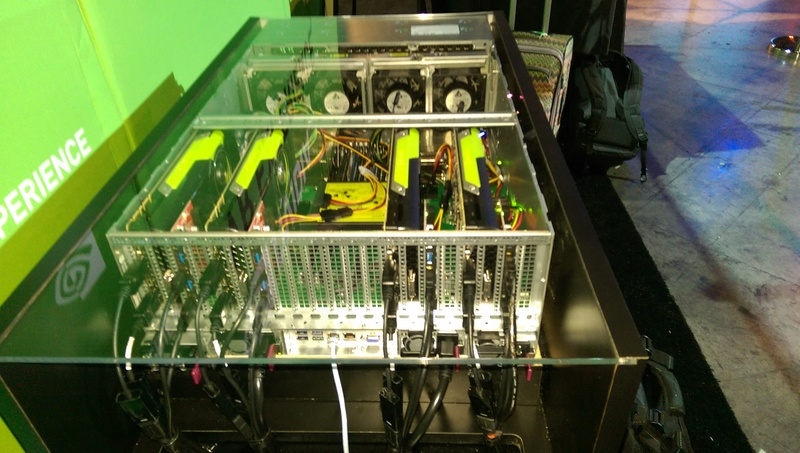With $20,000 worth of GPUs, you could run the ultimate HTC Vive LAN party
Getting virtual with friends

For all of Zuckerberg’s talk of virtual reality’s ability to bring people together, wearing a VR headset is currently a very lonely experience.
Sure you can increasingly play VR games online with friends, but there’s nothing quite like being the same room as the people you’re experiencing a game with.
Well, Nvidia appears to have solved the problem for the time being, by creating a machine that’s capable of running four HTC Vive headsets simultaneously, meaning that four people in the same physical space can all enjoy a shared VR experience.
- Give your audio a boost with the best PC gaming headsets
An enterprise-grade machine required
The catch (because there’s always a catch isn’t there?) is that you’ll need an insanely powerful PC to make this setup a reality.
And by ‘insanely powerful’ we that it’s equipped with four professional-grade Nvidia Quardro P6000 graphics cards, which retail for over $5,000 each.
Even then it’s not just a case of booting up Windows and getting the four Vives connected. Instead, Nvidia has the machine running four virtual machines on a PC server, meaning that each Vive essentially has an instance of Windows to itself.

Nvidia’s blog post doesn’t mention the lighthouse setup that’s being used to track the four headsets, but potentially that’s as many as eight lighthouses tracking the four of them.
Get daily insight, inspiration and deals in your inbox
Sign up for breaking news, reviews, opinion, top tech deals, and more.
All this means it’s safe to say that this won’t be a setup that the average gamer will be enjoying in their own home any time soon, but it’s good to see that someone is working on making multi-user VR a reality.
It may be expensive and unweildly now, but such a setup is only going to get cheaper and easier to use over time.
The setup is currently on display at the GPU Technology Conference which is currently taking place in San Jose.
- Check out the competition with our review of the Oculus Rift
Jon Porter is the ex-Home Technology Writer for TechRadar. He has also previously written for Practical Photoshop, Trusted Reviews, Inside Higher Ed, Al Bawaba, Gizmodo UK, Genetic Literacy Project, Via Satellite, Real Homes and Plant Services Magazine, and you can now find him writing for The Verge.
